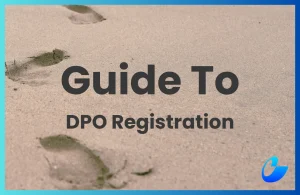A profit-sharing agreement is a contract where parties share in a business’s profits in exchange for contributing capital, labour, or expertise.
It can include not just who gets what, but when, how and under what conditions.
After all, while profit-sharing is proven to attract top talent and partners, keeping them requires terms that balance fair rewards with business needs.
Why use profit-sharing?
When you want to incentivise someone based on performance, without handing over shares (which is less common) or locking into fixed payments, a profit-sharing arrangement is arguably the most practical method.
It is often used to align parties around a common goal, particularly when flexibility, clarity, and fairness are important, but equity isn’t on the table.
Common types of profit-sharing arrangements
Common setups we have assisted Malaysian businesses with include:
- Partnership Profit-Sharing: Common in Limited Liability Partnerships or conventional partnerships, where roles and capital contribution may vary.
- Joint Venture (JV) Profit-Sharing: Profits are shared between two or more entities collaborating on a specific project. This usually includes dividends, as JV arrangements usually involves shared equity.
- Investor Profit-Sharing: Like JV models, investor returns may be structured as direct profit distributions or dividend-like payouts.
- Employee-Based Profit-Sharing Schemes: Designed to reward performance and support retention, and an alternative to providing equity.
Each model comes with its own legal and commercial considerations, particularly around how “profit” is defined and calculated.
Key clauses
These are not exhaustive but intended to offer a starting point.
| Clause | Key Considerations |
|---|---|
| Definition of profit | Define whether it is net profit, gross profit, post-tax earnings, or another calculation. Reference audited financials or an agreed formula. |
| Form of payouts | Decide if payouts will be in cash, credited, reinvested, or converted into other benefits such as equity. |
| Profit-sharing formula | Clarify if it is a fixed percentage, tiered, or conditional on performance. Avoid vague numbers to prevent disputes. |
| Timing of distribution | Specify whether payouts occur monthly, quarterly, after annual audit, or upon a trigger event. |
| Performance conditions or thresholds | State if profit-sharing is tied to sales targets, continued involvement, or other specific conditions. |
| Profit or loss scenarios | Determine if a minimum profit level is required before sharing, and whether prior losses carry forward. |
| Exit and termination | Define what happens if a party exits mid-cycle – unpaid portions may be forfeited, carried forward, or settled. |
| Dispute resolution process | Outline a process for resolving disagreements (negotiation, arbitration, or court) to prevent conflicts. |
Each term should be customised based on your business goals and legal structure.
Best practices and considerations
Generally, a profit-sharing agreement is a legally binding contract under the Contracts Act 1950, provided the required elements are present.
But what really makes a profit-sharing agreement work is clarity on key terms and alignment with your business structure.
A Profit-Sharing Agreement can be standalone but is often embedded into other contracts to ensure key terms are consolidated in one place for consistency and avoid piecemeal documentation. Here’s how it is typically done:
- Conventional partnerships: Partnership Agreement
- Limited Liability Partnerships: LLP Agreement
- Private companies: Shareholders’ Agreement (for equity owners), Service Contracts (for advisers), Employment Contracts, Side Letters (for custom arrangements)
Improper documentation, especially if in contradiction with other business arrangements, can lead to unenforceability or disputes down the line.
Conclusion
A well-structured profit-sharing agreement is a tool to build trust, motivate performance, and grow sustainably, and works best when tailored to your business and clearly understood by everyone involved.
FAQs on Profit Sharing Agreements in Malaysia
Q: Can I include profit-sharing without giving equity?
Yes. Profit-sharing does not require you to issue shares or give up ownership. Many Malaysian businesses use service contracts, consultancy agreements, or side letters to structure profit-sharing, especially for employees, advisers or external collaborators.
Even if you already have an existing arrangement involving equity (e.g. through a JV or shareholders’ agreement), you can include a separate profit-sharing mechanism, just make sure it aligns with the existing documents to avoid conflicts.
Q: What’s the difference between profit-sharing and a bonus?
A bonus is usually discretionary – something the company gives out based on goodwill or internal performance reviews.
Profit-sharing is contractual. It’s tied to an agreed formula and usually based on actual profits. Once signed, a profit-sharing agreement is legally binding and enforceable.
Q: Is profit-sharing always the right model for my business?
Not always. It depends on your business stage, setup and how roles are structured. While profit-sharing can be flexible, including deferred payouts or minimum profit thresholds, unclear expectations can lead to tension and misunderstandings. That said, it’s perfectly fine to stick with a fixed-fee model or other reward structures if that suits your business better.
Q: Is commission the same as profit-sharing?
Not quite. Commission is typically tied to sales or referrals – a fixed rate paid out per transaction, usually to sales staff or third parties, regardless of overall business profit. Profit-sharing is usually based on the company’s net or agreed profits after costs. Both can work together but they serve different purposes.










